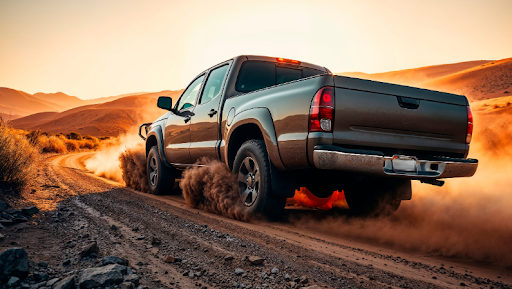
BMW and Dana’s axle-lent adventure proves profitable for both parties.
Suppliers know the importance of winning and holding onto new business. Dana is no stranger to this idea and certainly embraced its newfound BMW X5 business when they were awarded the contract for the front axle.
 |
| The Motoman robot moves an axle housing to the next step of the machining process. |
 |
A gear set component pre-assembly. |
 |
Completed front and rear axles. |
Vitaniemi further explained how the initial stages of this program included quite a bit of give and take between BMW’s axle experts and those of Dana. The final decision on who would ultimately end up building the axles was paramount on the specifications and performance. Dana knew that if they were to keep, and eventually grow this business, they would have to go above and beyond.
Enter the new facility.
While building a new plant was a risk given the economic climate over the last few years, Dana also saw it as an opportunity.
“We realized that the best thing for Dana was to create a whole new environment for this business. Starting to make parts where the tolerances for all the machining are half what we are used to, based on BMW’s specs, to get to that point we decided that a new plant was the way to go,” says Vitaniemi.
The Plant
Dana broke ground on the Orangeburg, S.C., plant in May 2002 and the plant was completed in January 2003. The 126,000 sq. ft. facility has 120,000 sq.ft. of shop floor and 6,000 sq.ft. of office space. There are currently 123 employees at the plant, 51 of which have college degrees.
One consideration for the plant location was the number of universities in the area that would help provide a young/educated workforce for the plants. Another consideration was the amount of land available for expansion should the need arise. According to Dana, there are 17 acres available for expansion. The inside of the plant is also expansionready. The back wall of the plant is moveable and the actual assembly/machining stations are modular and can be shifted around if the process needs to be tweaked.
The doors have been open for just over a year and Dana reports a 99 percent attendance rate and zero accidents.
Evidently BMW is happy with what has been going on in Orangeburg as they have expanded their deal with Dana on the X5 to include the rear axle as well. The first production shipment of the rear axles went out on February 11.
The Process
Essential to the entire process is the temperature of the plant itself, which is kept constant. A constant coolant temperature must also be maintained for the machining processes. The entire plant’s infrastructure is assisted by the use of Heller CNC machines that feature windows-based logic.
The initial step in the axle building is the machining of front housing and cover for the gear sets. There are two shifts working on these operations, eight total employees. After the covers/housings are ‘rough cut’ they undergo a finishing cut.
The housings/covers are then washed to ensure that no debris or dust remains. This is mandatory because the slightest bit of contamination or build-up can cause the units to be out of spec, which is within microns. Post-washed units are then verified by an in-line Zeiss coordinate measuring machine. In the next step of the process, the housings/ covers are bar-coded and moved into assembly. Once there, the pinion position is gauged for optimal mounting position. The pinions are assembled to an exact position (optimal) and 28 characteristics are measured to control the positioning of the pinion to the gear itself. This is the most critical operation in the entire process as everything is based on the mating of the gear/pinion.
The Zeiss machines are employed again to verify the pinion position.
The differential cases are gauged for optimal position and put together with the gear sets themselves. From that point, the backlash and preload conditions are verified. Throughout the entire process there are over 500 measurements taken with both the housings/covers as well as the gear sets.
The rear axles go through 100 percent noise verification. This is administered in just about one minute. The axle is tested under typical driving conditions and correlated to vehicle acoustics. Upon completion, the front axles are shipped directly to BMW. The rear axles are shipped to ZF where they sequence and sub-assemble the axle into a rear chassis suspension module.
Car Testing
Six to eight axles a day are designated for testing and put into X5s. Testing includes both electronic measurements and human input. Several of Dana’s people were trained as BMW test drivers, familiarizing themselves with NVH, performance and overall feel that is commensurate with what BMW vehicles are meant to be.
Dana went out, got the new business, built a new plant, met all the specifications and performance goals set out by BMW and themselves. As a result they are now doing the rear axles as well as the front axles. Based on the synergy BMW and Dana have going on this current project, the logical question is: What’s next?
 |  |
| A sealing agent is placed on the axle assembly to be mated and sealed moments later. | One of several visual verification steps helps to maintain/ verify the specs. |









More Stories
RAM Trucks in Toronto: Why CarHub North York Chrysler Delivers the Best Experience
Buying Car Insurance in Toronto? Don’t Make These Rookie Mistakes
Extend Your Range, Maximize Your Storage with FRDM’s 45 Gallon Combo